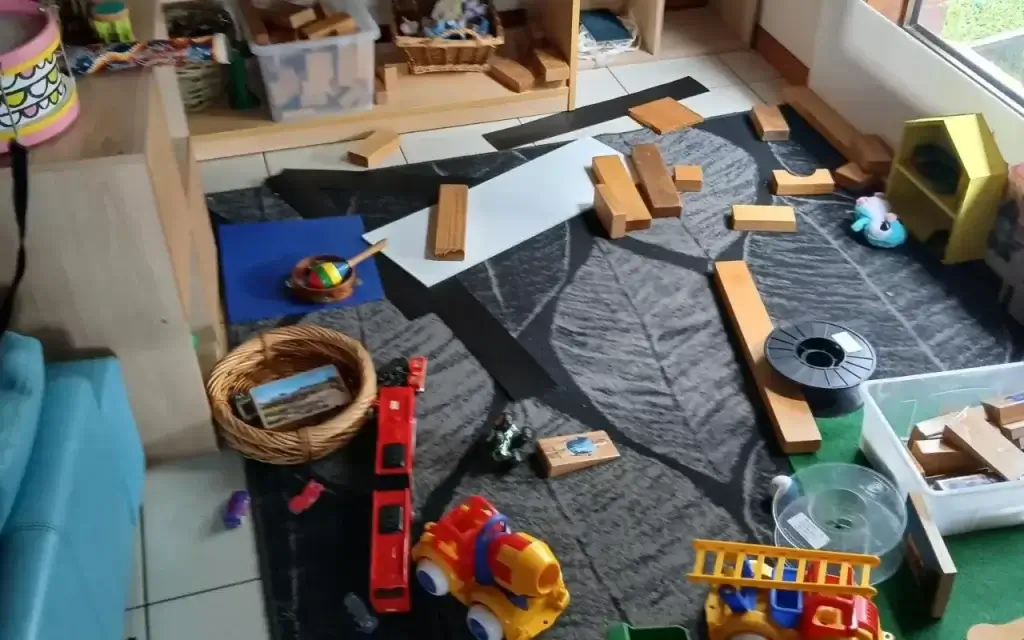The learning environment greatly influences the development of a child, especially when it comes to early childhood education. It is not just about a physical location; it entails the emotional, social, and intellectual aspects that shape the development of a child. An ordered, stimulating, and nurturing environment encourages curiosity, creativity, and a passion for learning. An ill-planned room, on the other hand, can be a hindrance to development and lower the learning willingness of a child.
The Importance of a Supportive Learning Environment

A good learning environment supports and enhances children’s capacity to learn and develop necessary life skills. It comprises various elements, ranging from the classroom environment to teacher-student relations and atmosphere. Because children are safe and supported, they are better positioned to engage in significant learning experiences.
Positive environment fosters emotional comfort. Early infancy is a period that is critical to children’s emergent social and emotional development. Positive reinforcement, encouragement, and acceptance enhance young learners to develop confidence, strength, and sympathy.
The Physical Environment’s Impact on Learning
Early childhood education greatly relies on the physical setting. The classroom or daycare facility arrangement has to be child-centered in order to support safety as well as autonomy. Open spaces facilitate free movement, while specific learning spaces facilitate organized play and instruction.
To create a quiet environment, use natural elements such as plants, wooden toys, and gentle lighting. Additionally, interactive and dynamic learning environments such as reading areas, painting areas, and fantasy play areas provide children with several avenues through which they can engage and explore the environment.
The Importance of Play in Learning
Play is an essential part of early childhood education. A well-designed learning environment supports play-based learning by offering various resources that stimulate creativity and problem-solving skills. Play-Based Learning in Early Childhood emphasizes that children learn best through play, which enhances cognitive, social, and motor skills development. When educators and caregivers integrate play into daily routines, children develop a deeper understanding of concepts and build critical thinking abilities.
LEARN HOW WE PROVIDE HOLISTIC FAMILY DAYCARE SUPPORT
Emotional and Social Dimensions of the Learning Environment
Apart from the physical conditions, a child’s social and emotional climate contributes significantly to their learning process. A friendly and open atmosphere inspires young people to express themselves, make friends, and enhance their social skills. Teachers have a significant role to play in this regard by maintaining good relationships and exhibiting good manners.
It is an environment that fosters cooperation, collaboration, and problem-solving. Group-activating exercises such as interactive games and stories allow children to learn important people skills.
Sustainability and Environmental Awareness
Teaching children about sustainability from an early age is crucial. Incorporating eco-friendly practices within the learning environment encourages children to develop a sense of responsibility toward the planet. Recycling Activities for Preschoolers can be a fun and instructive approach to teach young students the value of reusing resources and minimising trash. By engaging in hands-on recycling projects, children learn about environmental conservation in an interactive and meaningful way.
The Role of Policies and Procedures in Childcare
A structured learning environment requires clear guidelines and policies to ensure safety, inclusivity, and consistency. Policies and Procedures in Childcare outline the necessary standards to create a secure and nurturing space for young learners. These policies guide educators and caregivers in delivering high-quality care and education while fostering a supportive atmosphere for both children and parents.
LEARN HOW WE NURTURE YOUNG MINDS AT WYNNUM FAMILY DAY CARE
How We Create an Optimal Learning Environment
Wynnum Family Daycare aims to provide an interesting and supportive learning environment for young children. Our practice focuses on holistic development and the goal of ensuring that all children are provided with care and support to thrive. We support play-based learning, sustainability, and positive social relationships to achieve a balanced education.
By instilling best practices in early childhood education, we are building environments that ignite curiosity, confidence, and a life-long love of learning. We work to build a foundation for each child’s future through structured activities, exploration by hand, and nurturing community.
KNOW WHAT PARENTS SHOULD KNOW ABOUT THE EARLY CHILDHOOD EDUCATION
Creating a Stimulating Learning Space
Early childhood educational environment shapes the child’s cognitive growth, social growth, and emotional growth. The good environment with good relationships and stimulating activity invokes the passion to learn and enables young children to learn the necessary skills of life. Young children can be offered an active, purposeful learning experience by integrating sustainable methods, coordinated policy, and play in their day-to-day activities.
CONTACT US FOR WYNNUM FAMILY DAY CARE AND EDUCATION SERVICE DETAILS



